In the combination greenhouse of Germany's Emsland Gemüse, part of Emsflower, April marks the annual crop rotation season. Not only were the first cluster tomatoes of the year harvested in week 16, but a large part of the complex also saw bedding plants, making way for the second planting of tomatoes. At the start of the new harvesting season, we looked back and ahead on-site with production manager Erwin Savenije.
Both in terms of cultivation technique and sales, the management of the vegetable branch looks back on a successful tomato year 2023. "The fact that we are forced to cultivate without CO2 obviously limits our production. Our wood boiler does not supply CO2 yet, and liquid CO2 is simply too expensive for now. Another cost factor is the minimum wage. Nevertheless, we cannot complain, especially in terms of price. However, we must distinguish between different segments: we were able to achieve good prices for cocktail tomatoes, while it appears more difficult to implement a price increase for a popular product like cluster tomatoes. In this respect, we also experience a lot of pressure from cheaper-producing countries. Last season, we had the advantage that our cluster tomatoes were almost entirely sold in 650g packages, allowing us to note good margins," explains Erwin. In total, the tomato cultivation covers about 18 ha.
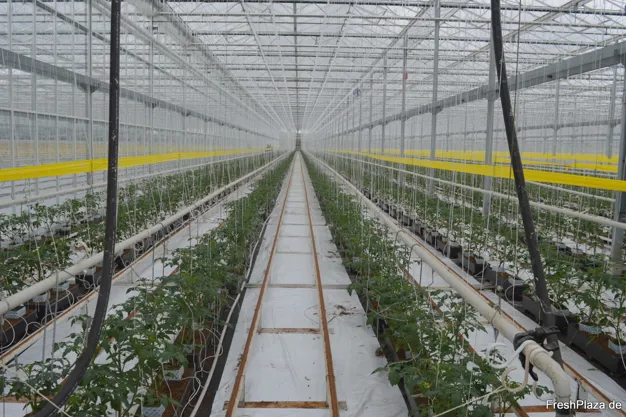
Fresh tomato plants shortly after the crop rotation in the greenhouse of Emsland Gemüse.
Emsland Gemüse adopts a cautious approach in the first phase of the season. "As soon as the major producing countries decrease in production, around weeks 26-33, we enter the market with larger volumes. Our season normally ends around week 48, whereas in the past, we sometimes continued until deep in December. However, due to increased competition from Spain, this is simply no longer profitable. I do not rule out, however, that we might allocate a section for illuminated cultivation in the future." The weather conditions after the first planting in week 3 until deep into April were not exactly favorable, acknowledges Erwin. "Relatively high temperatures, little light: We will undoubtedly see this reflected in the quality, increased disease pressure, and possibly also lower fruit weight."
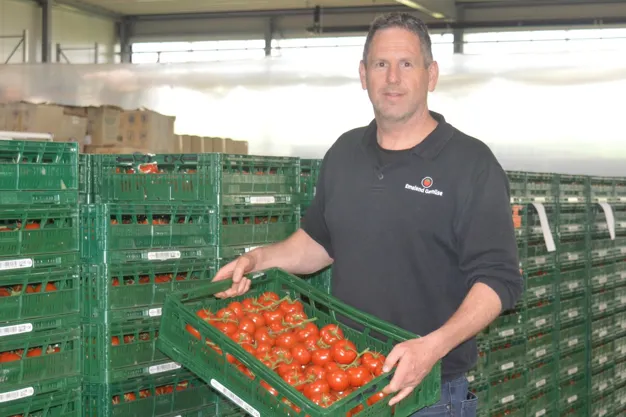 Erwin Savenije during the visit to the greenhouse in week 16. Cluster and cocktail tomatoes are mainly packed in cardboard with flow pack. Labels are increasingly being replaced by pre-printed packaging.
Erwin Savenije during the visit to the greenhouse in week 16. Cluster and cocktail tomatoes are mainly packed in cardboard with flow pack. Labels are increasingly being replaced by pre-printed packaging.
New varieties and cultivation methods
Compared to last year, there has been a significant change in the variety portfolio of Emsland Gemüse, according to Erwin. Cherry tomatoes of the Rivolo variety are no longer being cultivated this year. "This is mainly due to the declining demand, which is probably largely due to decreasing purchasing power. After all, we are talking about a tomato in the higher price segment." With about 60 percent of the total volume, the cluster tomato Sweeterno still forms the mainstay, followed by the cocktail tomato Brioso (30 percent) and the beef tomato Rebelski. In addition, Emsland Gemüse is involved in several variety trials, including trials with high resistant varieties. For now, however, Erwin stresses that the company has been able to keep Tobrfv at bay. "In that sense, it is not a necessity for us to engage in this on a large scale, especially since variety trials and data collection are very time-consuming. What also plays a role is that there is no cluster tomato yet that can match Sweeterno in terms of shelf life, but also fruit weight and yields. However, the main argument is that the use of HR varieties still does not guarantee that Tobrfv will not occur."
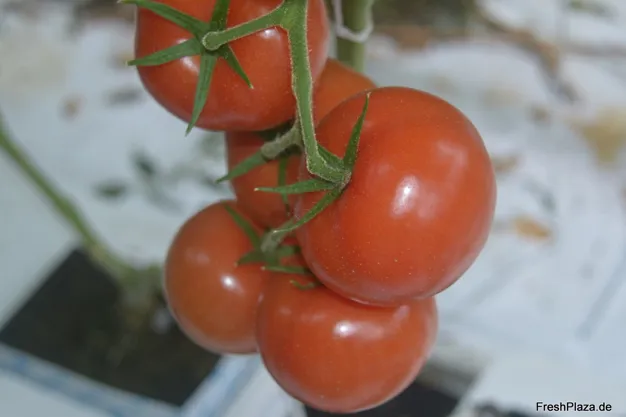
The Sweeterno cluster tomato forms the mainstay in the greenhouse of Emsland Gemüse in Emsbüren, Germany.
Emsland Gemüse mainly supplies retail customers within the state of Lower Saxony. Sales are entirely through the cooperative Landgard. "Regional cultivation and sales are our strength. In addition, we consciously focus on flavorful tomatoes instead of bulk products." This literally and figuratively pays off: "It even happens that consumers personally approach us with positive feedback."
In addition to variety trials, the cultivation process is continuously optimized. Erwin: "Although we are not organically certified, if you look closely, we are certainly leaning towards it. For example, we use peat-free substrate, collect our drainage water, and focus on natural pollination. After initial trials last year, this year we are cultivating cluster tomatoes on a larger scale (0.7 ha) as hydroponics. In our Erlebniswelt nearby, we have been growing lettuce on the water for several years, so in that sense, we already have the necessary experience."
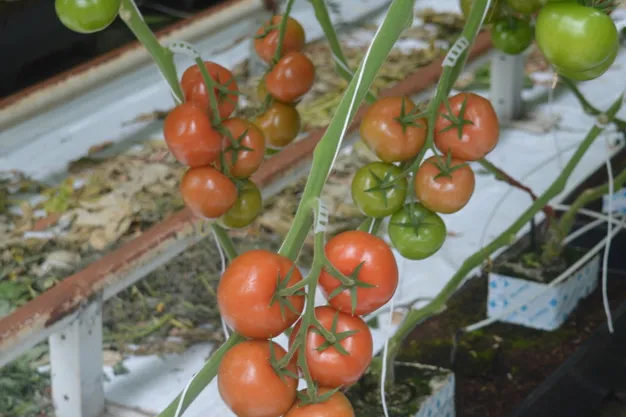
Cocktail tomatoes of the Brioso variety.
New construction and future
Erwin also refers to the massive new construction on no less than 13 ha that is to be completed before the end of the year. Initially, this mainly involves scaling up the production of bedding plants, but like the existing capacity, it involves a combination greenhouse, where tomatoes can also be cultivated. "Once this new complex is up and running as it should, I do not rule out that we will explore other avenues in the future. Think of commercial water lettuce cultivation or year-round cultivation of various fruit vegetables. We are also fortunate to have expansion opportunities, although it must be noted that buying land in our region is not as easy as it was a few years ago. In that sense, we do notice that Emsland has become more attractive to companies."
For more information:
Erwin Savenije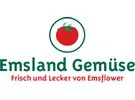
TB Emsland Gemüse GmbH
Sechs-Sterne-Weg 6
48488 Emsbüren
Tel.: +49 172 7952831
Email: [email protected]
www.emsflower.de
